I’ve been inspired by many different projects and ideas over the last few months since I first decided to do this project. I’ve listed the most relevant ones below. For none of these projects I have seen any source code or detailed information about the technical background. They are purely inspirational in nature.
Hand from Above
“Hand from Above” is an interactive installation by Chris O’Shea that ran on BBC Big Screen in Liverpool in the past. A giant hand randomly tickled, stretched, flicked or removed a person in front of the screen. It was created using openFrameworks and is probably one of my main inspirations.
Monstermaker
The monstermaker is a project by two students, Luis Grass and Felix Lange. It was also created using openFrameworks.
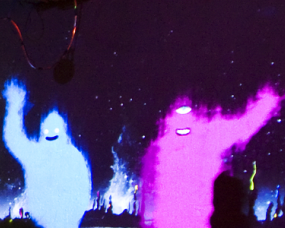
Storm of Enquiry
This project allowed users to use umbrellas to shelter or play with the rain and text in messages by phone, which rained down on everyone. Each submitted message was posted to Twitter in real time. This piece combined openFrameworks and Box2D. The code was created by Luke Malcolm.

Wooden Mirror
Built in 1999, this is the first mechanical mirror Daniel Rozin built. This piece is made of 830 square pieces of wood, 830 servomotors, control electronics, video camera, computer and wood frame. It mirrored the image it saw through a small camera by tilting the individual wooden tiles to reflect light in a different angle. The shadows would then create the image pixel by pixel.
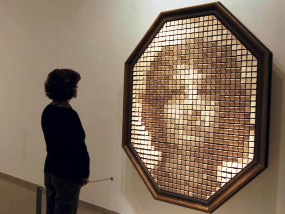
Who Am I
This was an interactive installation at the Science Museum, London, UK, 2010. A camera detected people standing in front of it and then projected their silhouette onto a big white screen in front of them. Those silhouettes were formed out of lots of little bubbles in different colours.
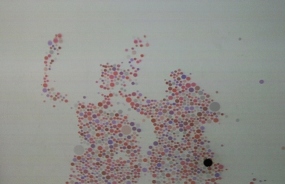
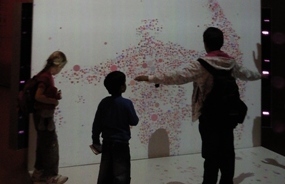
Bubbles
“Bubbles” was an interactive installation at the ZKM, Karlsruhe, Germany. It was produced by Wolfgang Muench and Kiyoshi Furukawa in 2000. Using your shadow you could interact with the bubbles that were projected on a large screen. You could gently push those bubbles or lift them up or pop them, depending on the speed of your movement. This was always one of my favourite installations and still is a big source of inspiration for me.
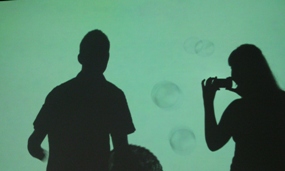
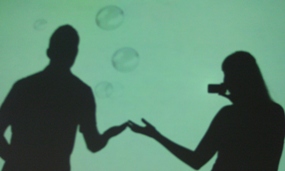
Water
This installation (left image below) worked by stepping onto the projected water from above. A camera then detected the silhouette of the person and the water started to ripple where the person stepped on. The other image to the right is from the Microsoft touchscreen table that comes with this built-in application that works in a similar way but obviously uses touch instead of motion tracking.

